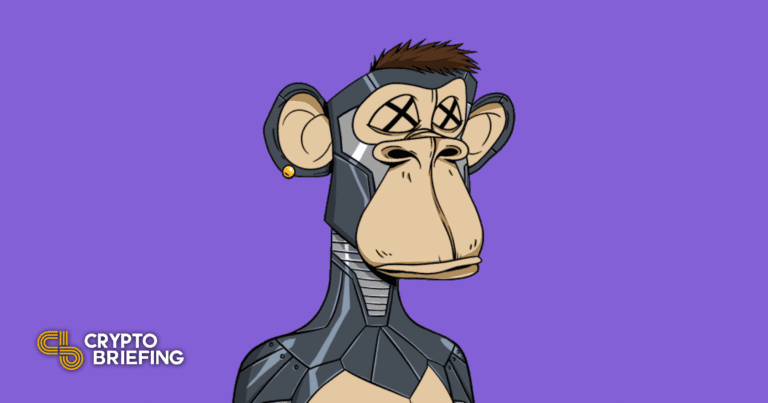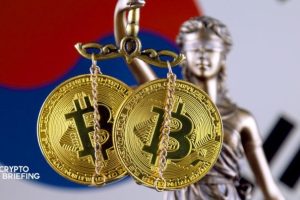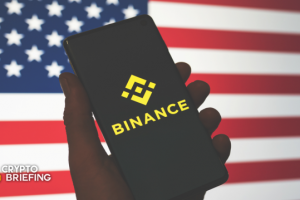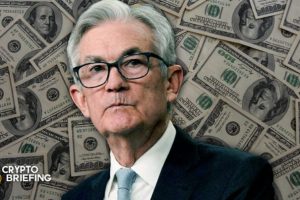
Key Takeaways
BendDAO is a lending protocol for NFTs.
The project is currently suffering from an insolvency crisis as ETH depositors have rushed to withdraw their funds, creating a bank run scenario that could collapse the NFT market.
BendDAO’s co-founder CodeInCoffee has submitted a proposal to adjust the protocol, but it must pass a governance vote.
Share this article
BendDAO’s reserves briefly fell to 0.75 ETH early Monday.
BendDAO Can’t Repay Lenders
As many NFT community members feared last week, BendDAO is experiencing a bank run.
The so-called “NFTfi” protocol saw its Ethereum reserves drained over the weekend, meaning ETH lenders are now unable to recoup their deposits from the protocol’s reserves. According to Etherscan data, BendDAO’s Ethereum wallet held just 0.75 WETH early Monday. It’s since received a 500 WETH deposit and holds 486.5 WETH at press time, down from around 18,000 WETH three days ago. The protocol had previously loaned roughly 15,000 WETH.
BendDAO is a lending protocol built for NFTs. Its main value proposition is letting NFT holders deposit their assets as collateral to borrow ETH. When someone deposits an NFT into BendDAO, they can borrow up to 40% of that collection’s floor price in ETH. For example, with Bored Ape Yacht Club’s floor price currently around 67.9 ETH, Bored Ape owners can borrow up to 27.1 ETH. However, NFT depositors can have their assets liquidated if the floor price drops below a certain threshold.
Conversely, anyone holding ETH can deposit their funds to the protocol to capture yield. BendDAO claims to offer 77.54% APR on ETH deposits with 73% paid in ETH and 4.53% paid in its BEND token. The yield comes from NFT holders who pay interest on ETH borrowed against their NFTs. However, according to the protocol’s homepage, the interest rate on these ETH loans sits at 93.96%. As the rate increases, holders are disincentivized to pay back their loans. As a result, many have already defaulted and their NFTs have gone up for liquidation, creating a “bad debt” scenario akin to the subprime mortgage meltdown that caused the 2008 financial crisis.
Co-Founder Proposes Adjustments
When the floor price for a deposited NFT drops too low, it goes up for auction on BendDAO. However, the protocol requires that bids are above the borrower’s debt and at least 95% of the NFT collection’s floor price. The bidder must also lock up ETH for 48 hours. This means that there’s little incentive for someone to place a bid if the borrower’s debt is too high, and this has resulted in many NFTs receiving no bids after they go up for auction. Several NFTs from sought-after collections like Bored Ape Yacht Club, Mutant Ape Yacht Club, Doodles and CloneX currently appear on an “alert list” as they are at risk of liquidation. If many NFTs get liquidated at once, the market could suffer from a collapse, as was feared with Bored Ape NFTs deposited to BendDAO last week.
While NFT depositors face losing their NFTs if their collection plummets in value, those who deposited ETH into the protocol also stand to lose out if the protocol doesn’t recoup enough funds to repay them. This weekend’s ETH drain suggests that many depositors have already lost confidence in the protocol’s ability to remain solvent. As fears of a “bank run” circulated, pseudonymous BendDAO co-founder CodeInCoffee reassured the community in a Discord post that “the protocol is working as expected,” echoing similar reassurances shared by Terraform Labs in the lead-up to Terra’s infamous bank run in May. They’ve since shared a proposal to “help ETH depositors to build confidence”, including proposed amendments to the NFT liquidation threshold and auction period. “Hope that WAGMI… let’s build together” they tweeted when announcing the plans to make adjustments. “WAGMI,” an acronym for “We Are Going to Make It,” was popularly recited by crypto hopefuls during the 2021 bull run, but lost its meaning after Bitcoin and the rest of the market crashed more than 70% over the first half of 2022. The proposal must now be accepted by the DAO in a governance vote to pass.
Disclosure: At the time of writing, the author of this piece owned ETH, some Otherside NFTs, and several other fungible and non-fungible cryptocurrencies.
Share this article
The information on or accessed through this website is obtained from independent sources we believe to be accurate and reliable, but Decentral Media, Inc. makes no representation or warranty as to the timeliness, completeness, or accuracy of any information on or accessed through this website. Decentral Media, Inc. is not an investment advisor. We do not give personalized investment advice or other financial advice. The information on this website is subject to change without notice. Some or all of the information on this website may become outdated, or it may be or become incomplete or inaccurate. We may, but are not obligated to, update any outdated, incomplete, or inaccurate information.
You should never make an investment decision on an ICO, IEO, or other investment based on the information on this website, and you should never interpret or otherwise rely on any of the information on this website as investment advice. We strongly recommend that you consult a licensed investment advisor or other qualified financial professional if you are seeking investment advice on an ICO, IEO, or other investment. We do not accept compensation in any form for analyzing or reporting on any ICO, IEO, cryptocurrency, currency, tokenized sales, securities, or commodities.
See full terms and conditions.
















